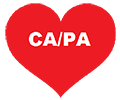
Setting Up an Effective Corrective and Preventative Action System
The end result objective of CA/PA is, quite simply, a solution to the issue from which the Corrective Action Request (CAR) was generated. If it is not driving toward a solution, a CAR is a waste of time and resources. For organizations in regulatory environments, the CAPA System is an over-arching umbrella—all control points flow through to the CAPA system.
Learning Objectives
- The essential components of an effective CA/PA system.
- Corrective action, remedial action, and preventive action—learn the difference.
- Understanding the internal & external sources that must feed into the CA/PA system.
- Flow-charting the CA/PA system.
- Writing a CA/PA procedure / CA/PA forms.
- CA/PA System software
- PICCC Tactic [Problem...Investigate...Comparison...Clues...Cause].
- CA/PA documentation and verification.
- Trending and Management Review.

“CA/PA is the HEART of any Effective Quality Management System”
Key Elements of a Sound CA/PA Program
- Documented procedure.
- Method for documenting (Form or software).
- Inputs (data sources).
- Method for analyzing inputs.
- Method for prioritizing.
- Containment.
- Investigation (determine root cause).
- Disseminate Information.
- Identify solutions (corrective or preventive).
- Verification or validation.
- Impact assessment (risk analysis), where appropriate.
- Corrective Action Plan.
- Implement and Monitor.
- Effectiveness verification.
- Management Review.
Who Should Attend?
- Those with management responsibility to ensure that all nonconformance issues (in cGTPs, these are defined as deviated product) are documented and evaluated.
- Anyone who is appointed a Management Representative of the Quality System.
 Download the Course Brochure
Download the Course Brochure